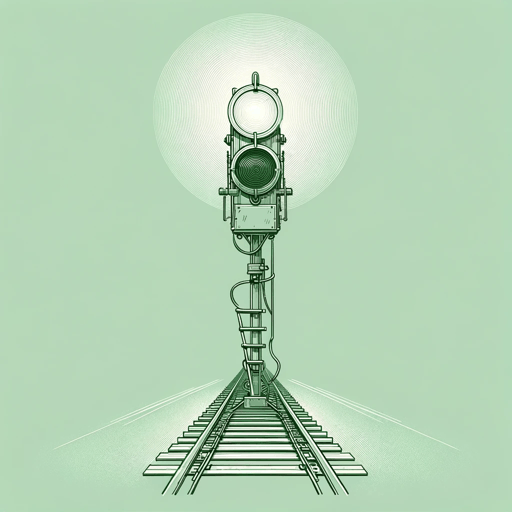30 pages • 1 hour read
Charles DickensThe Signal-Man
Fiction | Short Story | Adult | Published in 1866A modern alternative to SparkNotes and CliffsNotes, SuperSummary offers high-quality Study Guides with detailed chapter summaries and analysis of major themes, characters, and more.
Story Analysis
Analysis: “The Signal-Man”
“The Signal-Man” is a gothic short story about the potential, as well as limits, of human communication in facilitating responsible action. It focuses on the titular signal man’s deep anxiety as a result of receiving repeated warning signals, exploring the pain—and trauma—of ethical existence.
The story explores the themes of The Burden of Responsibility, The Supernatural and the Limits of Human Understanding, and Communication, Connection, and (Social) Mobility in the aftermath of the 1840s railway boom in England. The supernatural is not relegated to the decrepit ancestral castles or haunted Victorian mansions that are the typical staples of gothic fiction. Instead, it inhabits modern technology, asserting itself on an alternative acoustical plane via the electric bell and appearing on the railway track itself. Dickens brings the ghostly to a modern infrastructure designed to bridge physical and informational gaps as he explores the limitations of human communication, obligation, and agency.
The story, in fact, begins with cross-class miscommunication, or at least misperception. The middle-class narrator reaches out to the working-class signal man and finds that the latter challenges many of his preconceptions. Having initially assumed that the signal man’s underground workplace is inherently “dismal,” the narrator revises his assumptions after listening to 







Related Titles
By Charles Dickens

A Christmas Carol
Charles Dickens

A Tale of Two Cities
Charles Dickens

Barnaby Rudge: A Tale of the Riots of Eighty
Charles Dickens

Bleak House
Charles Dickens

David Copperfield
Charles Dickens

Dombey and Son
Charles Dickens

Great Expectations
Charles Dickens

Hard Times
Charles Dickens

Little Dorrit
Charles Dickens

Martin Chuzzlewit
Charles Dickens

Nicholas Nickleby
Charles Dickens

Oliver Twist
Charles Dickens

Our Mutual Friend
Charles Dickens

Pickwick Papers
Charles Dickens

The Mystery of Edwin Drood
Charles Dickens

The Old Curiosity Shop
Charles Dickens
